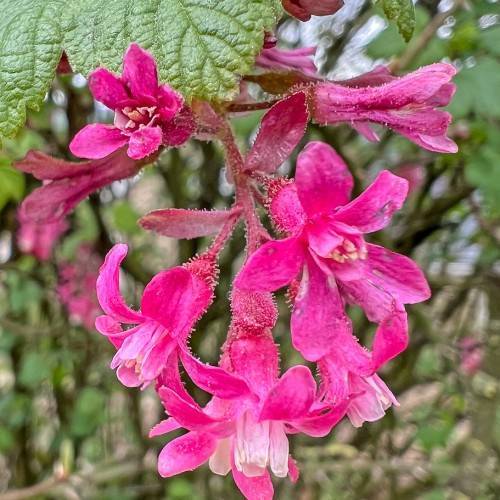
Red-Flowering Currant
Ribes sanguineum
Also Known As - winter currantCycle:
Perennial
Watering:
Minimum
Hardiness Zone:
7
Flowers:
Flowers In Spring
Sun:
Full sun, Part sun/part shade
Soil:
Sandy,Loamy,Clay,Rocky
Fruits:
Fruits In Summer Ready In
Leaf:
Yes
Growth Rate:
Moderate
Maintenance:
Low
Care Level:
Medium
watering
Red-Flowering Currant (Ribes sanguineum) prefers moist, well-drained soil with plenty of organic material. It should be watered regularly to keep the soil evenly moist, but not waterlogged. Allow the soil to dry out slightly between waterings. This plant should be watered regularly during the growing season, about once a week or when the top inch of soil is dry. Make sure the soil isn't allowed to get soggy during winters, as it can cause root rot. During the summer months, it might need to be watered a bit more frequently.
sunlight
Red-Flowering Currant typically does best in full sunshine for 7-10 hours per day, ideally during the morning or early afternoon. The plant prefers to receive sunshine in the spring and summer when temperatures are warmer. It should receive plenty of sunlight to bloom, grow and increase its foliage. For late spring and summer, give the Red-Flowering Currant suitably strong light, making sure it is exposed to direct sun for no more than 5 consecutive hours in order to avoid sunburns. Afterwards, it should be moved to a shadier spot with filtered sunlight. During autumn and winter, this plant can benefit from cool and indirect sunlight, such as from a nearby window.
pruning
Pruning Red-Flowering Currant (Ribes sanguineum) should take place in late winter or early spring, ideally before new growth begins. For the best results, it is important to prune with a purpose in mind instead of randomly cutting off branches. Thinning out the branches will help give the shrub a more open shape, while removing older, unproductive branches can help increase flower production. Make sure you are leaving enough space between branches to make sure good air circulation within the shrub and remove any branches that appear to be diseased. Pruning should only take off up to 1/3 of the total growth each year.
